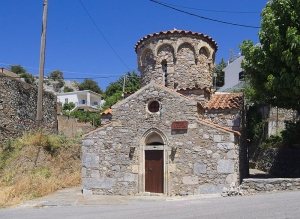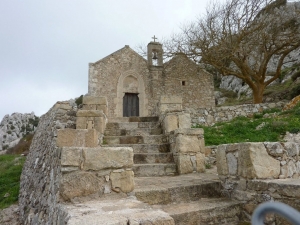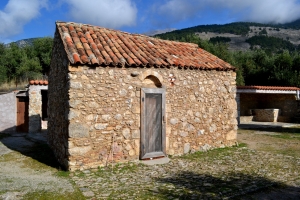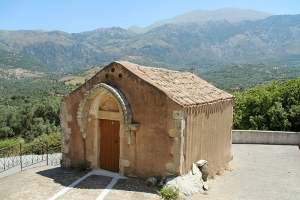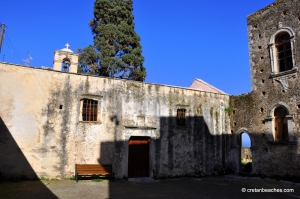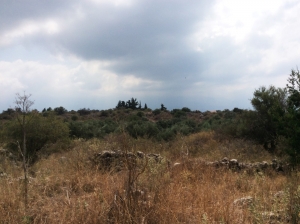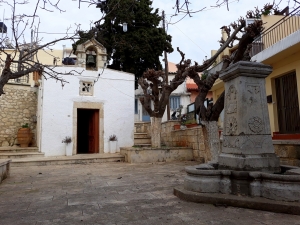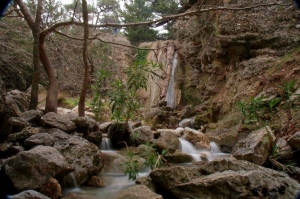The church of Saint Irene (Agia Irini) in Axos is one of the many Byzantine churches of the village. It is located inside the village and a few meters west of the hill of Ancient Axos, which was one of the strongest cities during the Greco-Roman Period that flourished until the Byzantine period.
The church of Saint George (Agios Georgios) is located at the highest point of the ruined Medieval settlement of Voila, on the outskirts of Armeni village of Sitia, and very close to the imposing Venetian tower of Salamon family.
The small one-storey church of Saint George (Agios Georgios) in Koustogerakos, province Selino, is located in the cemetery of the village. The church rescues 15th-century frescoes by painter Georgios Provatopoulos, according to an inscription of 1488.
Ο ναός του Αγίου Νικολάου στις Λαμπιώτες είναι μικρός καμαροσκέπαστος και μονόχωρος που βρίσκεται στην είσοδο του χωριού. Αποτελεί ένα από τους πολλούς ναούς της επαρχίας Αμαρίου που είναι αφιερωμένοι στον Άγιο Νικόλαο. Πάνω από την είσοδο διακρίνεται ανακουφιστικό τόξο, όπου υπήρχε αγιογραφία του Αγίου Νικολάου.
The church of Panagia of Rodea is dedicated to the Annunciation to the Blessed Virgin Mary (celebr. March 25th) and is located in the center of the village Rogdia, next to the magnificent 16th-century villa Modino.
Η Υψηλή Πύλη, μετά την επανάσταση του 1866, προχώρησε στην ίδρυση ενός ακόμη νομού στην Κρήτη, που αποτελούνταν από τις επαρχίες Αποκόρωνα, Σφακίων και Αγίου Βασιλείου Ρεθύμνης. Αυτός ήταν ο νομός (λιβά) Σφακίων με πρωτεύουσα τον Βάμο.
Within the picturesque narrow streets of the market of Epano Archanes, we meet the small square with the small temple of the Holy Cross (Timios Stavros). The church is single-aisled and vaulted, and part of the sanctuary is carved in rock, while its sanctuary is stone-built.
In the beautiful forest of Selakano, streams are formed in winter which transport the waters of the Dikti mountain range to the lowest altitudes. Among them stands out a stream that connects Katharo with Selakano, north of the settlement Mathokotsana, as in its course it forms a beautiful 7-meter waterfall.











